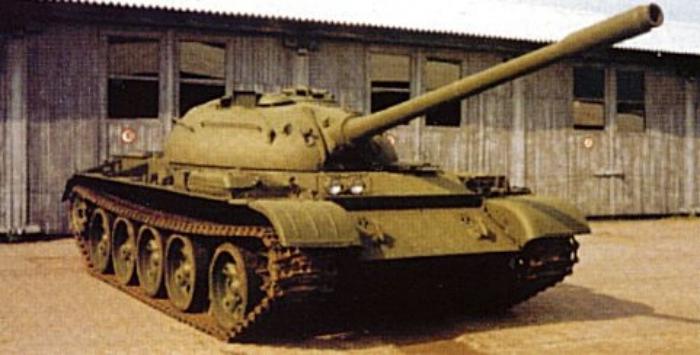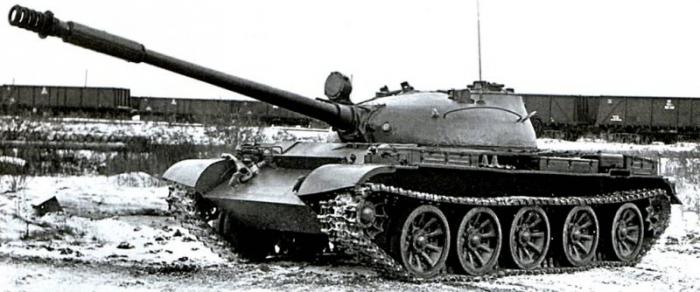Spring of 1945. There is still an assault on Berlin and Koenigsberg, ahead of the march to Prague and the war with Japan, and numerous design bureaus subordinate to the Soviet People’s Commissariat for Tank Industry are already starting to think about peaceful life. In addition to the transition to the design of equipment for the national economy, the developers were given the task of eliminating the design flaws (UKN) of tanks, both already produced and in the design stage. So what happened? Why did the fighting vehicles that passed half of Europe cease to suit the Soviet leadership and the military? And everything is very simple. At the front, during the period of active hostilities, the life time of the tank was an average of a week, so laying down a resource of mechanisms that far exceeded this period was unprofitable. In extreme cases, if the car was lucky not to burn out in the first or second attack, it was possible to replace the units that had exhausted their life. But in peacetime, the tank should be operated for at least five years, and then undergo conservation in mobilization parks and cropped military units. First of all, the latest Soviet vehicles fell under the UKN program : IS-3, T-44, T-54. The latter, after the specified refinement, was rightfully recognized as the best post-war tank.
From the T-54 ...

According to experts, the T-54 favorably differed from its peers in good mobility, powerful weapons, and a rational configuration of the turret and hull. The D-10T gun mounted on the tank worked well, destroying the latest Wehrmacht armored vehicles on the battlefields of the past war. Since 1944, the anti-tank self-propelled gun SU-100 was armed with this gun. An attempt to install this gun on the T-34-100 and T-44-100 tanks was unsuccessful due to a weak transmission. And then the T-54 was created. The hull of the tank repeated (both in shape and size) that of the T-44, but the hemispherical tower was completely new. Already in 1946, the machine was adopted and began to enter the army. On August 29, 1949, the USSR successfully tested a nuclear explosive device, and almost immediately the military began to study how equipment behaves under conditions of using atomic weapons. And here the T-54 began to have problems. The tank successfully protected the crew from light radiation (flashes) and weakened the action of the shock wave, however, the turret rotation mechanism at the same time failed, even if it was fixed “in a marching way”.
... through the T-55 ...
To conduct combat operations in the context of the use of tactical nuclear weapons, significant changes were made to the machine's design and a set of anti-nuclear defense measures was introduced. The new tank was assigned the designation T-55, it was adopted by the armies of the USSR and many countries of the world. This machine participated in the hostilities during the Arab-Israeli conflicts, the Iran-Iraq war, in Angola, Yugoslavia, Afghanistan and many others.
... to the T-62
Around the same time as the T-55 began to enter the army, NATO countries adopted a powerful 105-mm tank gun L7A1. This forced the Soviet designers to begin developing a new machine, known to us under the designation T-62A.
Device and construction

The design of the machine under the designation "Object 165" began in 1959 at the design bureau of Uralvagonzavod. A modernized rifled gun D-54TS with a mechanism for automatically ejecting fired shells was installed on the tank, which significantly reduced the gas contamination of the fighting compartment during firing. The gun was designated U-8TS. Due to the installation of a new gun, it was necessary to design a new body - it turned out to be longer and wider than that of the T-55. This was due to the increased breech of the tank gun and a longer shot (projectile), which, in turn, required to expand the shoulder strap of the tower. Such a radical alteration of the hull could have been avoided by introducing separate loading, however, this led to an increase in the time for reloading the gun, which categorically did not suit the Main Armored Directorate. The engine and transmission remained the same. The new tank body required a change in the location of the track rollers to ensure proper alignment of the machine. From its predecessor to the "Object 165" passed and the PAZ system (anti-atomic protection). In parallel, work was underway on arming an experimental tank with a smooth-bore 115-mm U-5TS gun. A machine with this gun received the designation "Object-166." The use of smooth-bore guns allowed to significantly increase the pressure in the bore, which significantly increased the armor penetration of the projectile. In addition, the absence of a rotational component improved the characteristics of the cumulative jet of the corresponding ammunition.
Army Tank Service
Both "Objects", 165 and 166, were adopted in 1961 under the designations T-62A and T-62, respectively. Immediately began their serial production. However, if the T-62 was produced in 1975, the production of the T-62A was limited to 28 copies. The abandonment of the T-62A was due to a number of shortcomings of its guns. Less power and armor penetration than the T-62, the absence of a sub-caliber armor-piercing projectile for this gun, the presence of a muzzle brake, which unmasked the tank and interfered with aimed fire - these are the reasons for this decision. All released tanks were sent to the Carpathian Military District, where they were used as training vehicles. To date, not a single T-62A model has been preserved. Photos of these vehicles can only be found in archival sources and literature on the history of Soviet armored vehicles.
World of Tanks: T-62A - Rebirth
So the T-62A would have remained a forgotten instance of Soviet tank building if it were not for the appearance of the multiplayer game World of Tanks on the Internet. In this project, the machine was introduced as the Soviet medium tank of the tenth level. As in real life, he crowns the ST development branch, one of the founders of which was the legendary T-34. In the game "World of Tanks" T-62A there is no need to pump, as the machine is purchased in a top configuration. Of the additional modules, it is preferable to install improved ventilation and a rammer, and then, as they say, a matter of taste: either enlightened optics, or a vertical stabilizer. It all depends on personal preferences and the style of the game.
Game guide
Let's try to answer the frequently asked question: "How to play on the T-62A?" In terms of its characteristics, the car differs little from the immediate predecessor of the T-54, therefore the tactics of playing on them are similar and is standard for medium tanks: group operations, quick detours and a breakthrough into the depths of enemy defense. Due to the low silhouette and a very ricochet tower, it is possible in close combat against a heavy or anti-tank to either rub against the enemy or twist him. Engine ignition is quite rare, fires occur mainly due to damage to fuel tanks. The gun, with low projectile damage, has high rate of fire, accuracy and armor penetration.
Remodeling of the T-62A tank
Recently, remodeling is gaining popularity in the World of Tanks, that is, making changes to the tank model, up to its complete processing. On the official forum of the game, as well as on the sites of WOT partners, you can find mods for the T-62A that will allow you to both improve the appearance of your car, down to the smallest details of attachments, and replace it with something more modern: from T-72 to T-90 Unfortunately, partners and rivals in the game will not see these transformations, since the changes are saved only on the client’s computer, and not on the game’s server.